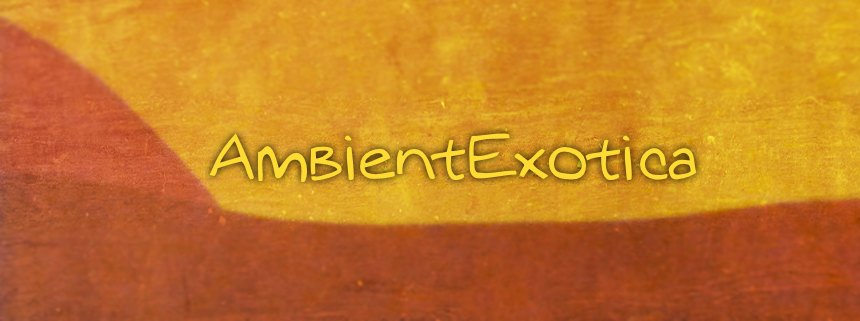
Kids For Tomorrow
Nequa
2010
Kids For Tomorrow is the collaborative effort of Nils Whitmont and Andrew Reichel aka your pal Gel-Sol who brought us colorful Ambient-fueled space operas such as IZ (2008) and K8ema (2010), both of them dedicated to his then new-born nieces, the former LP tremendously warm, spacey and mellow, the latter work much murkier, more brazen-mechanical and eerier. The duo's debut Nequa, released in 2010 on Upstairs Recordings and loaded with sound material and related effects from artists such as William Mempa, Chris Haines and Scott Sunn, is a magical journey through sixteen galactic tracks which shimmer in colors that range from the orange circles that are depicted on the psychedelic front artwork to neon-blue supernovae whose abyssal belly-massaging drones blast through the glistening settings. The guys create different moods and auras with ease, and while a golden thread is oftentimes missing due to the huge variety, the idea of interpreting each composition as a distinct uninhabitable planet or sphere isn't too far off, especially not in regard to the Prog Rock backgrounds of both artists and everyone involved. Nequa is a highly compelling 60's-influenced Space-Age diorama, with gorgeous melodies, a multitude of entangled synth layers, polished textures, the occasional filtered guitar and many quirky spoken word samples and rocket science quotations that are so typical for Gel-Sol's records. Without further ado, here's a glance at all of the Ambient-focused material as presented by Kids For Tomorrow.
00 00 00 is a poignant track title for the point of departure. Chinese gongs are unleashed, their sustain resonates with the pulsating laser sounds, baroque harp riffs, air plane-like drones and dreamy synth streams in the background. This vignette of over two minutes showcases the interdependence of the intertwining layers the duo stacks in most tracks. The oscillation between reverie and space kitsch works marvelously. Oh, and a guy orders a delicate meal. The seven minutes of Chu Quoit provide a cheeky synth glacier that has Gel-Sol's handwriting all over it due to its plinking pads, echoing reverb, twinkling star dust accentuations and swiftly wafting fizzles. Even though it is not a strict Ambient track, the dubby bass bubbles don't distract from the joyfully bustling scenery, but boost the liveliness carefully. While the Exotica-evoking title Pagan Eclipse Ritual is the most minimalistic capsule with whale song-esque structures, pompous drones and mechanical buzzes that link to the endemic style of K8ema, the following Mammatus creates a tremendously balmy stream of warm synth washes, analogue strings, spectral glints and the occasional twang of an electric guitar. The mood is entirely peaceful and content, yet melancholic. The layers mesh well together and lead to the equally successful Laundry Detergent Commercial with its silky alto flute melody, the complemental piano notes and additional bells. Almost New Age in style, the good taste is actually maintained by its Honky Tonk approach.
The auspiciously titled Friendship Village is the first truly remarkable track in terms of a progressive style, as it paints a nostalgic aura of mystique thanks to its many synth strings which glow in scary, cacophonous ways, creating a tension that is later lessened by the marimba-like bass drops; their echo submerges into the synth stab-laden distance. It is remarkable how peaceful and solemn this composition gets, as the far-away wafting synths boost the hollowness of the scenery, as if a dripstone cave is observed rather than the village itself. A superb track! Up next is a triptych of shadows: the soft interlude Precipice merges field recordings of rain with scintillating bells, Glitch artifacts and AM radio frequency bursts, but is nothing more than a prelude to Now Here Is Nowhere which places a gentle piano arrangement in-between pinball machines, space cymbals and dark synth waves whose texture and tonality hint once more at K8ema. The final third consists of Descent, a construction full of chinking champagne-filled glasses, black hole synth stabs and insectoid clicks and pops. All of these three songs have their delineation of darkness in common. They aren't exactly terrifying, but oscillate between a concentrated depth and loftier ornaments. The latter are the reason I'm not counting the next track Great Tiger Lake to the darker works of Kids For Tomorrow, as its dark drones are much more streamlined, with the occasional ecclesial organs thrown in for Prog Rock reasons, or so it seems. The theremin-like warbled synth string evokes an ambiguously soothing eeriness, and likewise do the dark matter waves expand the majestic gloom of the soundscape.
The darkness remains an important part in the last third of Nequa which becomes truly creepy and pitch-black before reaching safer shores. While the strangely titled – even by Andrew Reichel's standards – Waxing McGee encapsulates convoluted 6/8 beats with coruscating beams of light, gurgling splutters and milky way mouth organs, thus residing on shady but generally harmless patterns, Serious Anomalies is a magnificently frantic dob that camouflages its nature with its beatless structure. Heavily stuttering field recordings of emerald parks in megacities merge with both a claustrophobically spiraling faux-harp loop of madness and frosty vibraphone glints. The return of the alto flute augments the iciness, deeply wafting bass drones whirr around a whistled melody, and last but not least is a quavering metallic source of noise apparent. The fusion of all these layers makes Serious Anomalies a pitch-perfect, if also slightly clichéd Dark Ambient space track, and though it is filled with synthetic particles, the flute injects an organic feel to this composition. The following Pulsar is breaking the whole mood, as its deeply aquatic drone maelstrom leaves enough room for a crystalline gamma ray melody that isn't exactly jocular, but contains enough blithe and luminescence to catapult it to stardom. It is a gorgeously soothing song. Even the follow-up Sequim maintains the doleful-threatening atmosphere and the particularly space-like dronescape with enough fissures for the sounds to float into, a wave-like setup of swelling 16-bit ripples and the rapidly falling sustain of multilayered synth breezes. The penultimate Hidden Empire is a melodious, if slightly dusky setup of thunderous timpani drums, an orange-colored two-note synth stream with twinkling molecules and possibly a heavily altered electric guitar. Hidden Empire keeps the pace, never showing a clear-cut progression or providing a distinct change of pace. The final titular track Nequa is the centerpiece of over eleven minutes, admixing a dreamy haze of blurry organs with sawtooth drones, guitar gusts, laser chirps from cyber birds and harsher elemental forces that are placed near Nequa's demise, a concoction of machine-like trade winds.
Who is right? The press text of Upstairs Recordings about Nequa promises an album that's different from Gel-Sol's material. The artist himself states the contrary, referring to the similarities of Whitmont's and his compositions to the Space Ambient works. I'm with Gel-Sol's declaration: Nequa is mostly based on the darker scheme of his album K8ema, and I wouldn't be surprised at all if Reichel injected ideas of this work phase into both albums. It is hard to pick a stellar favorite, but strong contenders are the wonderfully warm Mammatus, the quirky Chu Quoit that harks back to Gel-Sol's debut album, the aesthetically pleasing unison of piano chords with flute tones on Laundry Detergent Commercial, the marimba skeleton in the drip stone vista of Friendship Village and the bright deepness and innocence of Pulsar. And these are just five out of 16 wonderful tracks that paint wide galaxies and related phenomena. The middle section of Nequa is eminently dark, strange and pulse-driven, but this is probably the most intriguing and coherent phase, as the depth increases and the experimental settings grow in number. Beginning and end are much brighter and less melancholic, so these may be the more applicable parts for fans of IZ and Reichel's previous beat-driven albums. Whatever style you prefer, Nequa is a huge work both in quality and quantity, and I hope the duo will resurrect Kids For Tomorrow some time in the future. In the meantime, Andrew Reichel is preparing additional Sci Fi-influenced works, so his fans won't run dry on star-illuminated Ambientscapes. Even though I'm not sure who is responsible for each particular sound design, both artists work well together as this big project undoubtedly shows. An unexpected gem unknown to many people, but it is totally worth your while if you're the slightest bit interested in space exploration and the backing music that runs during those documentaries. Available on Amazon and iTunes.
Further listening:
On Gel-Sol's SoundCloud page, you'll find his latest experiments of the aural kind. He will probably never weave them into an album, but they are top-notch anyway.
Ambient Review 146: Kids For Tomorrow – Nequa (2010). Originally published on Nov. 14, 2012 at AmbientExotica.com.
